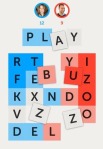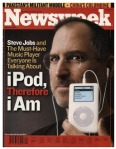Welcome to Printing Industry News Digest (PIND) issue 119, providing a
summary of major news items from the printing, publishing, packaging,
digital, and communications technology sectors. PIND incorporates brief
summaries and links to the week’s key news stories so that you can look
up that all important detail, digging deeper behind the headline.
 There simply had to be a tablet focus this week with both the iPad Mini and the Microsoft Surface hitting the headlines in the last few days. Early verdicts seem to vote in favour of the Mini, whilst many questions remain re the Windows 8 gang.
There simply had to be a tablet focus this week with both the iPad Mini and the Microsoft Surface hitting the headlines in the last few days. Early verdicts seem to vote in favour of the Mini, whilst many questions remain re the Windows 8 gang.
Early thoughts on Windows 8, Surface, and iPad Mini are certainly worth reading; are you backing Windows 8 early, and are you sticking your hard-earned in the Surface direction?: let us know at PIND.editor@gmail.com
 Early leaks also point to a new Nexus 10 product on the horizon, whilst the Nexus 7 with 8Gb looks as if it could be disappearing from the shelves far too quickly (IOHO).
Early leaks also point to a new Nexus 10 product on the horizon, whilst the Nexus 7 with 8Gb looks as if it could be disappearing from the shelves far too quickly (IOHO).
Interesting numbers on tablet shipments for Q3 2012 illustrate that the latest crop of Android product really did make a difference in real numbers. A direct comparison with last year shows some 10.2 million worldwide shipments compared to just 5 million for the same quarter last year. Apple continues to dominate of course.
 Well worth noting in the how-big-is-your-business stakes: Apple now has $121.3 million in cash, which, by comparison, is more than Amazon’s current market capitalisation ($100.77 billion).
Well worth noting in the how-big-is-your-business stakes: Apple now has $121.3 million in cash, which, by comparison, is more than Amazon’s current market capitalisation ($100.77 billion).
Further to last week’s worrying headlines re publications that are migrating from print to digital, The Big Issue in the North is now launching a digital edition! Your street vendor will be able to sell you a QR code and one-time access code in order for readers to be able to download the edition to their smartphone or tablet.
 Pocket is now available as an app for the Mac. Fans of the product once-known-as “Read It Later” might find the dedicated product a little more convenient than the browser based version.
Pocket is now available as an app for the Mac. Fans of the product once-known-as “Read It Later” might find the dedicated product a little more convenient than the browser based version.
Just one of those really handy postings: 10 things you didn’t know Dropbox could do. As can often be the case, Mashable’s claim is excessive, but there could certainly be three or four things to excite you.
 And finally, Just for us older print lovers that remember the term letterpress: it now appears as a word game! Letterpress is a free multi-player game for iPhone and iPad via the Game Center: a perfect blend of fun and strategy (says its inventor!).
And finally, Just for us older print lovers that remember the term letterpress: it now appears as a word game! Letterpress is a free multi-player game for iPhone and iPad via the Game Center: a perfect blend of fun and strategy (says its inventor!).
Keep your finger on the pulse: grab an RSS feed of PIND (copy this link into your feed reader); click here for the GenesisNews #Print Daily to get the latest daily stories; or click here for regular Tech & Comms updates in blog or RSS form. You can also connect to a free subscription of the Print Daily for an update on print, publishing, packaging and associated technology delivered straight to your in-box every day! For details on Genesis Marketing – publishers of PIND – click here.
PIND119
Missed Issue 118, including a bad week for print? Then simply click here!
Issue 117: Seven-inch tablets
Issue 116: August shows
Issue 115: newspaper turmoil








Get your Tech & Comms updates direct from the blog, use the RSS feed, or keep updated via Twitter.
 There simply had to be a tablet focus this week with both the iPad Mini and the Microsoft Surface hitting the headlines in the last few days. Early verdicts seem to vote in favour of the Mini, whilst many questions remain re the Windows 8 gang.
There simply had to be a tablet focus this week with both the iPad Mini and the Microsoft Surface hitting the headlines in the last few days. Early verdicts seem to vote in favour of the Mini, whilst many questions remain re the Windows 8 gang.Early thoughts on Windows 8, Surface, and iPad Mini are certainly worth reading; are you backing Windows 8 early, and are you sticking your hard-earned in the Surface direction?: let us know at PIND.editor@gmail.com
 Early leaks also point to a new Nexus 10 product on the horizon, whilst the Nexus 7 with 8Gb looks as if it could be disappearing from the shelves far too quickly (IOHO).
Early leaks also point to a new Nexus 10 product on the horizon, whilst the Nexus 7 with 8Gb looks as if it could be disappearing from the shelves far too quickly (IOHO).Interesting numbers on tablet shipments for Q3 2012 illustrate that the latest crop of Android product really did make a difference in real numbers. A direct comparison with last year shows some 10.2 million worldwide shipments compared to just 5 million for the same quarter last year. Apple continues to dominate of course.
 Well worth noting in the how-big-is-your-business stakes: Apple now has $121.3 million in cash, which, by comparison, is more than Amazon’s current market capitalisation ($100.77 billion).
Well worth noting in the how-big-is-your-business stakes: Apple now has $121.3 million in cash, which, by comparison, is more than Amazon’s current market capitalisation ($100.77 billion).Further to last week’s worrying headlines re publications that are migrating from print to digital, The Big Issue in the North is now launching a digital edition! Your street vendor will be able to sell you a QR code and one-time access code in order for readers to be able to download the edition to their smartphone or tablet.
 Pocket is now available as an app for the Mac. Fans of the product once-known-as “Read It Later” might find the dedicated product a little more convenient than the browser based version.
Pocket is now available as an app for the Mac. Fans of the product once-known-as “Read It Later” might find the dedicated product a little more convenient than the browser based version.Just one of those really handy postings: 10 things you didn’t know Dropbox could do. As can often be the case, Mashable’s claim is excessive, but there could certainly be three or four things to excite you.
 And finally, Just for us older print lovers that remember the term letterpress: it now appears as a word game! Letterpress is a free multi-player game for iPhone and iPad via the Game Center: a perfect blend of fun and strategy (says its inventor!).
And finally, Just for us older print lovers that remember the term letterpress: it now appears as a word game! Letterpress is a free multi-player game for iPhone and iPad via the Game Center: a perfect blend of fun and strategy (says its inventor!).Keep your finger on the pulse: grab an RSS feed of PIND (copy this link into your feed reader); click here for the GenesisNews #Print Daily to get the latest daily stories; or click here for regular Tech & Comms updates in blog or RSS form. You can also connect to a free subscription of the Print Daily for an update on print, publishing, packaging and associated technology delivered straight to your in-box every day! For details on Genesis Marketing – publishers of PIND – click here.
PIND119
Missed Issue 118, including a bad week for print? Then simply click here!
Issue 117: Seven-inch tablets
Issue 116: August shows
Issue 115: newspaper turmoil
Get your Tech & Comms updates direct from the blog, use the RSS feed, or keep updated via Twitter.











